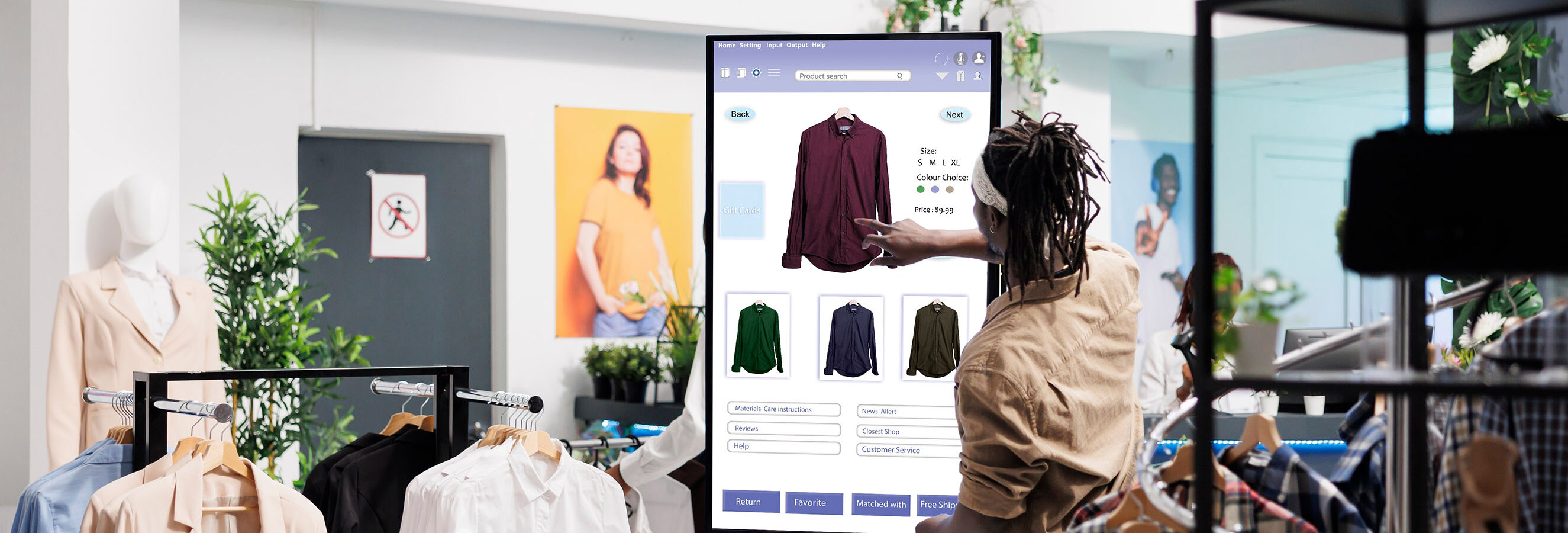As we move into 2025, the retail world is changing. New technology, efforts to be more environmentally friendly, and customer demands are changing how businesses interact with their customers. 2024’s retail trends revealed how shopping is changing, with exciting store experiences and personalized recommendations using AI. Here are the top retail trends that shaped 2024.
1. Enhanced In-Store Experiences
Stores are changing from just places to buy things into experiences where people can connect with brands in different ways. Think of engaging product demonstrations, virtual reality and augmented reality experiences, and areas made for sharing with others. Beauty brands have virtual mirrors that let you try on makeup, and clothing stores have smart fitting rooms that recommend matching clothes. These changes make shopping an engaging experience for shoppers and helps with customer loyalty.
2. AI-Powered Personalization
Artificial intelligence is changing the retail industry by creating shopping experiences that are tailored to individual customers. This helps brands know and predict what their customers want. AI tools can look at customer data to suggest products that match what each person likes, what they’ve bought before, and what they are currently doing. In 2025, shopping is expected to become very personal. This means you’ll get product recommendations that match your tastes, as well as special discounts and offers just for you. Online retailers use AI chatbots to provide quick answers to questions, and in-store AI kiosks assist shoppers in finding products that suit their needs.
3. Sustainable and Circular Economy Initiatives
Sustainability is not just a passing fad anymore; it’s something that shoppers have come to expect. Due to environmental concerns, stores are changing how they work to be more eco-friendly. Ways to reuse products, like recycling, selling used items, and renting, are becoming more popular. Clothing stores are starting programs that let customers return or recycle their old clothes, and furniture stores are providing rental options to help cut down on waste. In 2024, brands worked on using eco-friendly packaging, using less energy, and being clear about where their products come from to gain the trust of customers who care about the environment.
4. Omnichannel Integration
Shopping easily both online and in stores has become an essential part of the shopping experience. In 2024, stores invested heavily to make it easy to shop between their physical locations, websites, and mobile apps. Options like click-and-collect, loyalty programs that are easy to use, and flexible return policies make shopping easier for customers. By keeping their stock updated in all places, stores help customers find what they want easily, no matter where they are. This makes shopping easier and encourages brand loyalty.
5. Rise of Social Commerce
Social media has changed from being a place to promote products to a way to sell them directly. Social commerce, which means buying things directly through social media, increased significantly in 2024. This was especially true on platforms like Instagram, TikTok, and Pinterest. Live shopping events are becoming popular. In these events, influencers and brand representatives show off products in real-time, which encourages people to get involved. Brands are using content created by their customers and fun features like polls and quizzes to get people involved and create a feeling of community around their products.
6. Flexible Payment and Subscription Models
To keep up with what customers want, stores are offering flexible payment choices like “buy now, pay later” (BNPL) and are offering subscription plans for things like clothing, beauty products, and groceries. These models help customers have easy and affordable options, increasing brand loyalty. In 2024, subscription services will continue to diversify around delivery options and increased product choice.
Looking Forward
Retail in 2024 was all about creating tailored, memorable, and engaging experiences. By focusing on experiential retail, leveraging AI and omnichannel strategies, and embracing sustainability, brands can meet the needs of today’s consumer and build lasting relationships. As trends continue to evolve, retailers that stay agile and customer-focused will lead the way into a new era of retail.
